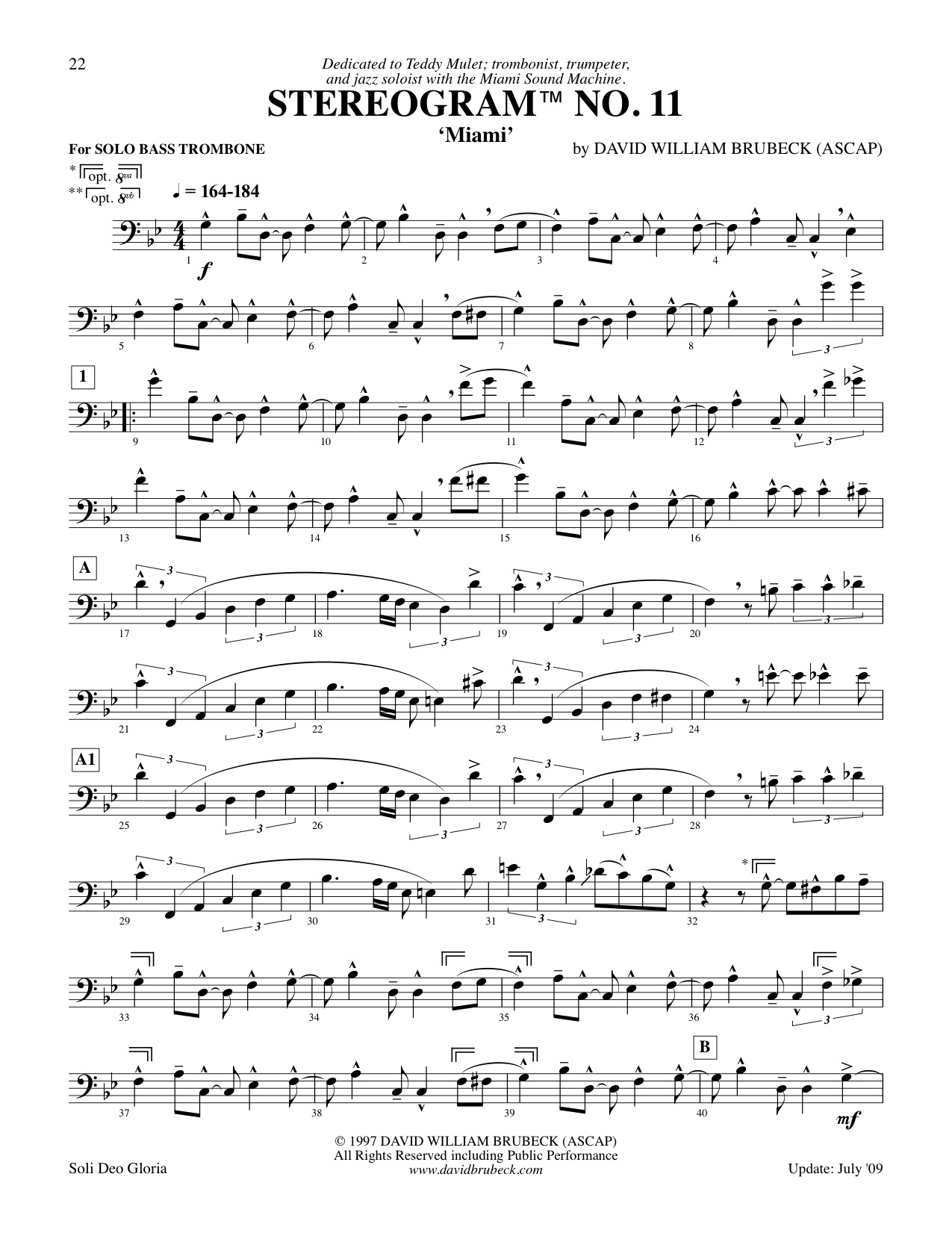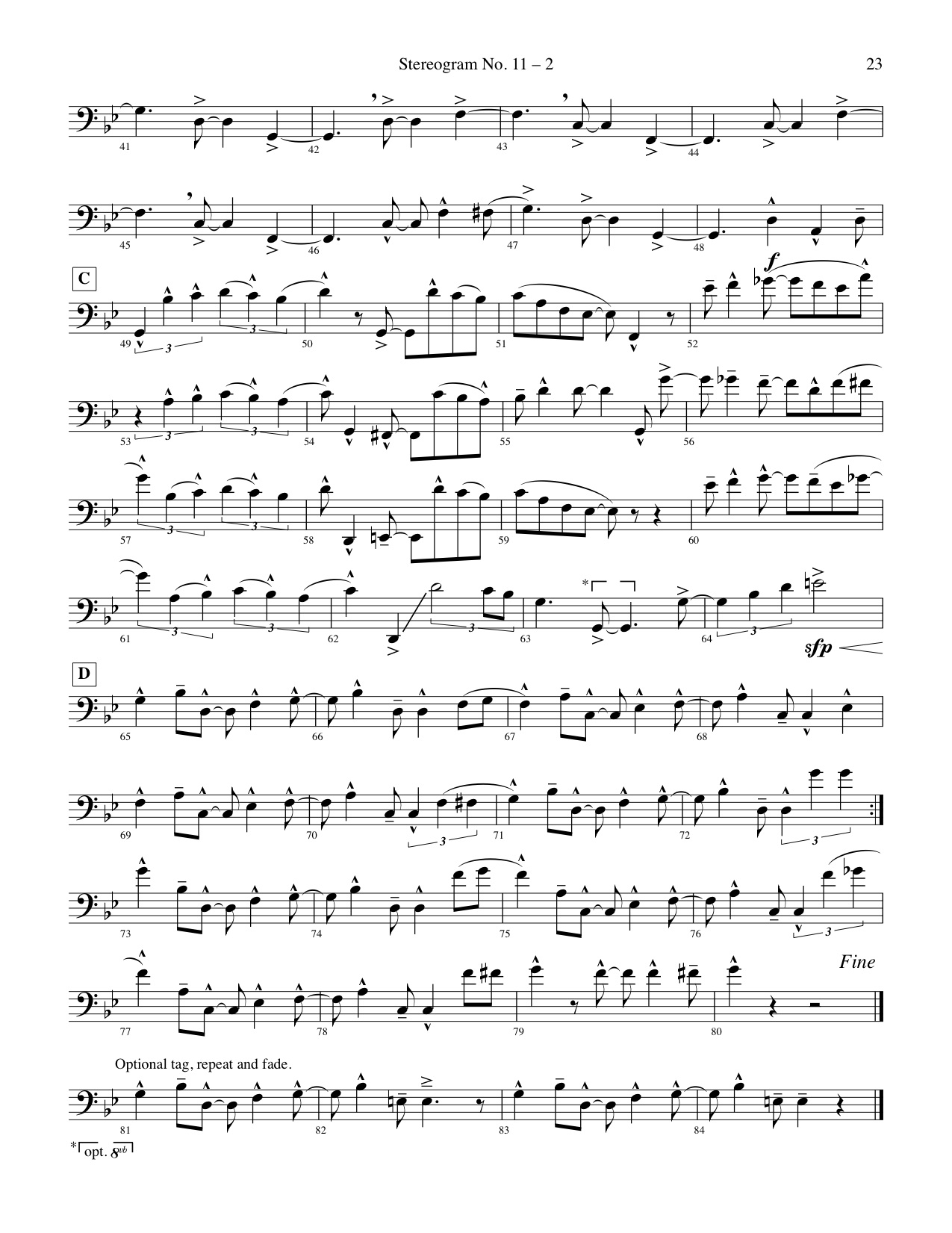 The two, free original Stereograms available for download on davidbrubeck.com, No. 1-“Pankow” and No. 11 “Miami” serve to lay the ground work for the solos which follow them. Stereogram No. 1 serves as a gentle introduction to the idea of playing two to three separate parts within a single melodic line. This is an idea fleshed out in the remainder of Volume I-“Three Smooth Stones”, which includes Stereograms Nos. 1-10. Stereogram No. 11 establishes an ambitious arc of more complicated rhythms, an even broader tessitura, and colorful impressions of places and people. These are the ideas explored in Stereograms Nos. 11-20, Volume II-“Modern Renaissance” you enjoy these free Stereograms, please consider purchasing the published collection of Nos. 1-20.
The two, free original Stereograms available for download on davidbrubeck.com, No. 1-“Pankow” and No. 11 “Miami” serve to lay the ground work for the solos which follow them. Stereogram No. 1 serves as a gentle introduction to the idea of playing two to three separate parts within a single melodic line. This is an idea fleshed out in the remainder of Volume I-“Three Smooth Stones”, which includes Stereograms Nos. 1-10. Stereogram No. 11 establishes an ambitious arc of more complicated rhythms, an even broader tessitura, and colorful impressions of places and people. These are the ideas explored in Stereograms Nos. 11-20, Volume II-“Modern Renaissance” you enjoy these free Stereograms, please consider purchasing the published collection of Nos. 1-20.
The opening of No. 11 “Miami”, features the use of a timba (typically a left-hand piano figure), punctuated by percussive horn accents. As the listener’s imagination absorbs and internalizes the rhythm of the timba, a smooth, deep baritone melody emerges. This melody relies upon the use of quarter note triplets and is contrasted in mood by the interjection of sharply accented horn figures.
Next, the timba returns and the horn section part reaches higher. These Stereograms were written when I was playing on a Bach 1 1/4 GM. For me, this represents a middle size, all-purpose mouthpiece. Recently, I have tended to favor the Doug Elliot LB 113-L-L8 or an old Mt. Vernon Bach 1 & 1/2 G. I also like Ben Van Dijk’s BM mouthpiece from Thein.
As a genuine bass part emerges, it sets the stage for a three part section- a tenor voiced melody, bass hits, and a melodic horn response in the upper regions of the bass trombone. After a climactic interchange, the timba returns to coax the horn line to a rhythmic finale.
Stereogram No. 11 would be a great one to practice away from the horn. Zing the rhythm first, using “dot” for short articulations and “dA” for long ones. This will help internalize and prioritize the rhythm and articulation. The use of the gentler ˜dA”, in place of the “Ta” syllable may also help to avoid overtonguing later.
Create your own exercise to help you feel more comfortable with the quarter note triplets. Using a metronome, practice four quarter notes followed by six quarter note triplets. Go back and forth between the two rhythms until they are secure. Add some of the articulations from the piece to the quarter note triplets. Play them on one note and then as written.
When practicing the upper register horn parts, play them in the staff until you really have them in your ear. Descending lip slurs will help you to connect the registers and play them with relative ease.
Dynamic and articulation variety will help you project the “Stereogram effect” and clarify the separate parts in the listener’s mind. Experiment.
Above all, remember that this is dance music-enjoy!


C. 2011 David William Brubeck All Rights Reserved. davidbrubeck.com
Stereograms are available from Hickey’s music and other fine retailers.
Stereograms Not. 1-20, Advanced-Intermediate Original Compositions for bass trombone/bass clef instruments
https://www.hickeys.com/search/products/sku050091.php
Stereograms Nos. 21-30, Advanced-Intermediate Original Compositions for bass trombone/bass clef instruments
https://www.hickeys.com/search/products/sku092661.php
Stereograms A-M, Beginner-Intermediate Arrangements for bass trombone/bass clef instruments
https://www.hickeys.com/search/products/sku099768.php>
